Themed collection The Spiers Memorial Lectures

Spiers Memorial Lecture: Compostable plastics: promise and pitfalls
In this perspective, we make the case for wider use of compostable plastics in food packaging, review labeling, infrastructure, and regulatory hurdles facing their adoption, and discuss the future of compostable-polymer research and development.

Faraday Discuss., 2026, Advance Article
https://doi.org/10.1039/D5FD00111K
Spiers Memorial Lecture: Multicomponent and high-entropy materials: an overview
This paper attempts to summarise some of the fundamental discoveries we have made about the geography of multicomponent phase space and the wide range of complex new materials that we have found within it.

Faraday Discuss., 2026, Advance Article
https://doi.org/10.1039/D5FD00110B
Spiers Memorial Lecture: organic, physical & polymer aspects pivotal in lignin valorization
This article addresses current challenges in lignin chemistry by exploring four thematic areas.

Faraday Discuss., 2026, Advance Article
https://doi.org/10.1039/D5FD00108K
Spiers Memorial Lecture: A retrospective view on the non-classical features revealed by advanced imaging of biominerals
This retrospective review focuses on two case studies that exemplify the non-classical features of biominerals, mollusk nacre for invertebrates, and bone for vertebrates, and how correlations with in vitro model systems helped unravel these features.

Faraday Discuss., 2025,261, 11-67
https://doi.org/10.1039/D5FD00054H
Spiers Memorial Lecture: Recent advances (and challenges) in supramolecular gels
This review provides readers with an updated understanding of supramolecular hydrogels and highlights current research presented during the Faraday Discussions meeting on advances in supramolecular gels.

Faraday Discuss., 2025,260, 9-34
https://doi.org/10.1039/D5FD00044K
Spiers memorial lecture: Experimental discovery of asymmetric bilayers, and a recent asymmetry example
Asymmetric GUV of phase-separated Lo + Ld in one leaflet, dyed red, inducing domains in the other leaflet of DOPC/chol, dyed green.

Faraday Discuss., 2025,259, 9-25
https://doi.org/10.1039/D5FD00041F
Spiers Memorial Lecture: New horizons in nanoelectrochemistry
This introductory lecture prefaces the 2024 New Horizons in Nanoelectrochemistry Faraday Discussion.

Faraday Discuss., 2025,257, 9-28
https://doi.org/10.1039/D4FD00159A
Spiers Memorial Lecture: How to do impactful research in artificial intelligence for chemistry and materials science
We discuss how machine learning researchers view and approach problems in chemistry and provide our considerations for maximizing impact when researching machine learning for chemistry.

Faraday Discuss., 2025,256, 10-60
https://doi.org/10.1039/D4FD00153B
Spiers Memorial Lecture: NMR crystallography
We present an overview of current methods for chemical shift driven NMR crystallography, illustrated with applications to complex materials.

Faraday Discuss., 2025,255, 9-45
https://doi.org/10.1039/D4FD00151F
Spiers Memorial Lecture: Quantum chemistry, classical heuristics, and quantum advantage
We describe the problems of quantum chemistry, the intuition behind classical heuristic methods used to solve them, a conjectured form of the classical complexity of quantum chemistry problems, and the subsequent opportunities for quantum advantage.

Faraday Discuss., 2024,254, 11-52
https://doi.org/10.1039/D4FD00141A
Spiers Memorial Lecture: From cold to hot, the structure and structural dynamics of dense ionic fluids
This article presents a perspective on what we think are key topics related to the structure and structural dynamics of ILs and to some extent high-temperature molten salts.

Faraday Discuss., 2024,253, 11-25
https://doi.org/10.1039/D4FD00086B
Spiers Memorial Lecture: Engineering biocatalysts
Enzymes are being engineered to catalyze chemical reactions for many practical applications in chemistry and biotechnology.

Faraday Discuss., 2024,252, 9-28
https://doi.org/10.1039/D4FD00139G
Spiers Memorial Lecture: New directions in molecular scattering
Molecular scattering is reviewed as it pertains to gas–gas as well as gas–surface reaction dynamics. We emphasize the collaboration of experiment and theory, from which new directions of research are being pursued on increasingly complex problems.

Faraday Discuss., 2024,251, 9-62
https://doi.org/10.1039/D4FD00015C
Spiers Memorial Lecture: Challenges and prospects in organic photonics and electronics
Bioelectronics are currently used in a huge variety of applications considering the ongoing revolution in personalised medicine. Bioelectronics are poised to make a significant impact on disease diagnosis and treatment.
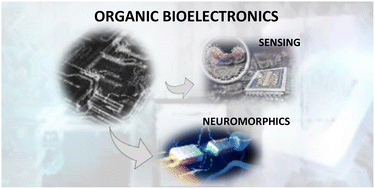
Faraday Discuss., 2024,250, 9-42
https://doi.org/10.1039/D3FD00152K
Spiers Memorial Lecture: Water at interfaces
In this article we discuss current issues in the context of the four chosen subtopics for the meeting: dynamics and nano-rheology of interfacial water, electrified/charged aqueous interfaces, ice interfaces, and soft matter/water interfaces.
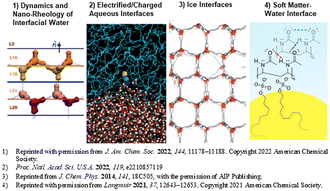
Faraday Discuss., 2024,249, 9-37
https://doi.org/10.1039/D3FD00147D
Spiers Memorial Lecture: Lithium air batteries – tracking function and failure
Here, we discuss experimental approaches developed by some of the authors to understand the function and failure of lithium–oxygen batteries.
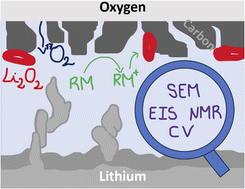
Faraday Discuss., 2024,248, 9-28
https://doi.org/10.1039/D3FD00154G
Spiers Memorial Lecture: Old but new organic electrosynthesis: history and recent remarkable developments
Organic electrolytic synthesis is experiencing a second renaissance and is expected to develop more and more as a comprehensive field, focusing on organic synthesis, but also producing the materials necessary to enrich our lives.
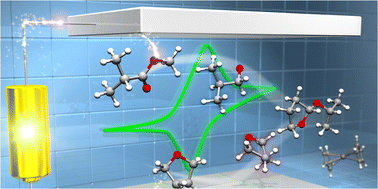
Faraday Discuss., 2023,247, 9-33
https://doi.org/10.1039/D3FD00129F
Spiers Memorial Lecture: Towards understanding of iontronic systems: electroosmotic flow of monovalent and divalent electrolyte through charged cylindrical nanopores
We present a classical density functional theory based on the hypernetted-chain approximation, which allows us to calculate the velocity of electroosmotic flows inside nanopores containing 1 : 1 or 2 : 1 electrolyte solution.
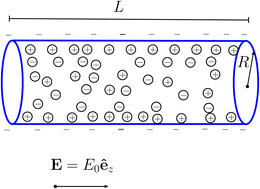
Faraday Discuss., 2023,246, 11-46
https://doi.org/10.1039/D3FD00062A
Spiers Memorial Lecture: Astrochemistry at high resolution
This Spiers Memorial Lecture introduces the Faraday Discussion on ‘Astrochemistry at high resolution’, focusing on the special case of interstellar complex organic molecules (iCOMs).

Faraday Discuss., 2023,245, 11-51
https://doi.org/10.1039/D3FD00106G
Spiers Memorial Lecture: Shielding the active site: a streptavidin superoxide-dismutase chimera as a host protein for asymmetric transfer hydrogenation
We have evaluated chimeric streptavidin superoxide dismutase C as a scaffold for an asymmetric transfer hydrogenase, incorporating [Cp*Ir(biot-p-L)Cl] as a cofactor.

Faraday Discuss., 2023,244, 9-20
https://doi.org/10.1039/D3FD00034F
Spiers Memorial Lecture: Catalytic activation of molecular nitrogen for green ammonia synthesis: introduction and current status
This article briefly reviews catalytic activation of N2 for NH3 synthesis under mild conditions. Described are historical background and current demand, recent advances on new catalysts, and next challenges.
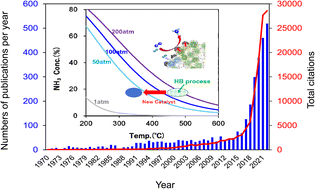
Faraday Discuss., 2023,243, 9-26
https://doi.org/10.1039/D3FD00070B
Spiers Memorial Lecture: Mechanochemistry, tribochemistry, mechanical alloying – retrospect, achievements and challenges
The paper presents a view on the achievements, challenges and prospects of mechanochemistry. The extensive reference list can serve as a good entry point to a plethora of mechanochemical literature.

Faraday Discuss., 2023,241, 9-62
https://doi.org/10.1039/D2FD00149G
Spiers Memorial Lecture: Next generation chalcogenide-based absorbers for thin-film solar cells
The lecture focuses on emerging chalcogenide-based thin-film photovoltaics and provides both an overview of selected absorber candidates that are of recent interest, and a deeper dive into an exemplary Cu2BaSn(S,Se)4-related family.
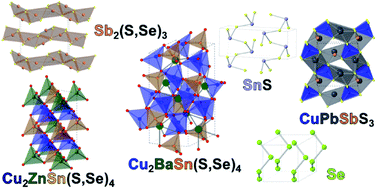
Faraday Discuss., 2022,239, 9-37
https://doi.org/10.1039/D2FD00132B
Spiers Memorial Lecture: Theory of unimolecular reactions
The historical and continuing advances in our understanding of unimolecular reaction dynamics have arisen from the synergy between improvements in experimental measurements and in theoretical methodologies.

Faraday Discuss., 2022,238, 11-67
https://doi.org/10.1039/D2FD00125J
Spiers Memorial Lecture: From optical to THz control of materials
The concept of using appropriately shaped pulses of light to control the properties of materials has a range of potential applications, and relies on an understanding of intricate couplings within the material.
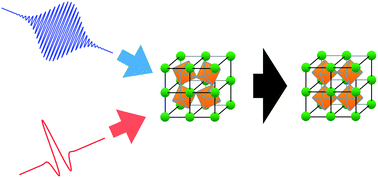
Faraday Discuss., 2022,237, 9-26
https://doi.org/10.1039/D2FD00098A
Spiers Memorial Lecture: Assembly-based pathways of crystallization
We review recent investigations into crystal growth by particle attachment, with an emphasis on oriented attachment.

Faraday Discuss., 2022,235, 9-35
https://doi.org/10.1039/D2FD00061J
Spiers Memorial Lecture: activating metal sites for biological electron transfer
The unique spectroscopic features of metalloenzymes reflect novel geometric and electronic structures imposed by the protein activating the metal sites for efficient biological function.
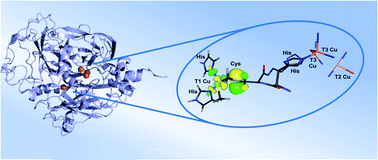
Faraday Discuss., 2022,234, 9-30
https://doi.org/10.1039/D2FD00001F
Spiers Memorial Lecture. Next generation nanoelectrochemistry: the fundamental advances needed for applications
After introducing nanoelectrochemistry, this introductory lecture focuses on recent developments in two major application areas of nanoelectrochemistry; electrocatalysis and using single entities in sensing.
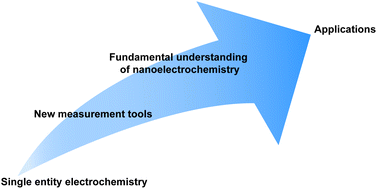
Faraday Discuss., 2022,233, 10-32
https://doi.org/10.1039/D1FD00088H
Spiers Memorial Lecture: Analysis and de novo design of membrane-interactive peptides
Membrane–peptide interactions play critical roles in many cellular and organismal functions, including protection from infection, remodeling of membranes, signaling, and ion transport.

Faraday Discuss., 2021,232, 9-48
https://doi.org/10.1039/D1FD00061F
Spiers Memorial Lecture: Coordination networks that switch between nonporous and porous structures: an emerging class of soft porous crystals
This review of soft coordination networks that undergo guest-induced switching between nonporous and porous structures addresses switching mechanisms and their potential utility.
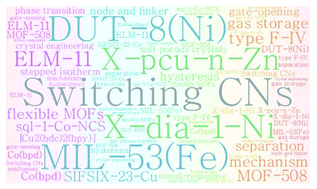
Faraday Discuss., 2021,231, 9-50
https://doi.org/10.1039/D1FD00037C
Spiers Memorial Lecture: CO2 utilization: why, why now, and how?
This overview on carbon dioxide utilization (CDU) provides a framework for the opportunities, boundary conditions, potential pitfalls, and critical needs to advance technologies rapidly to deploy CDU as a mainstream climate-relevant solution.

Faraday Discuss., 2021,230, 9-29
https://doi.org/10.1039/D1FD00029B
Spiers Memorial Lecture: Understanding reaction mechanisms in heterogeneously catalysed reactions
Heterogeneous catalysis lies at the heart of the chemical and fuel manufacturing industries and hence is a cornerstone of many economies.
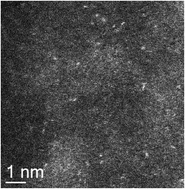
Faraday Discuss., 2021,229, 9-34
https://doi.org/10.1039/D1FD00023C
Spiers Memorial Lecture: Introduction to ultrafast spectroscopy and imaging of photochemical reactions
A brief overview is presented on ultrafast spectroscopy and imaging of photochemical reactions by highlighting several experimental studies reported in the last five years.
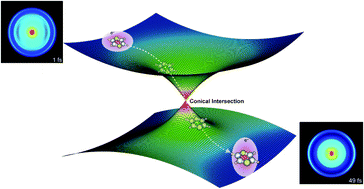
Faraday Discuss., 2021,228, 11-38
https://doi.org/10.1039/D1FD00015B
Spiers Memorial Lecture
Nanographenes and graphene nanoribbons are unique connectors between the domains of 1D-conjugated polymers and 2D-graphenes. They can be synthesized with high precision in solution and on-surface, and serve as ideal objects for nanoscience.
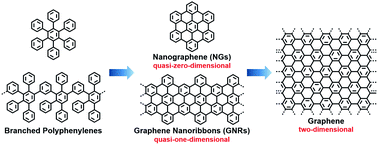
Faraday Discuss., 2021,227, 8-45
https://doi.org/10.1039/D0FD00023J
Introductory lecture: air quality in megacities
This introduction provides an overview of air quality in megacities, sources and atmospheric processing of emissions, impacts on health and climate, mitigation strategies, and challenges of COVID-19.

Faraday Discuss., 2021,226, 9-52
https://doi.org/10.1039/D0FD00123F
The state of the field: from inception to commercialization of metal–organic frameworks
We provide a brief overview of the state of the MOF field from their inception to their synthesis, potential applications, and finally, to their commercialization.
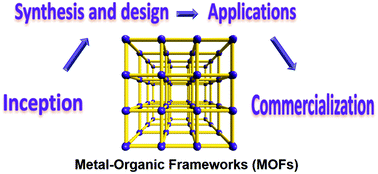
Faraday Discuss., 2021,225, 9-69
https://doi.org/10.1039/D0FD00103A
Introductory lecture: when the density of the noninteracting reference system is not the density of the physical system in density functional theory
We develop expressions for electron density defined through the linear response for general density functional approximations, demonstrating results for orbital functionals and for many-body perturbation theory, and explore the connections to developments in DFT.
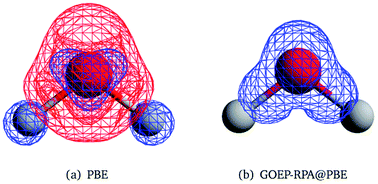
Faraday Discuss., 2020,224, 9-26
https://doi.org/10.1039/D0FD00102C
Optical costs and benefits of disorder in biological photonic crystals
We consider fault tolerance with respect to structural colour and disorder in biological photonics. Several systems have been examined to support discussion and enable optical modelling for a description of the optical costs and benefits of structural disorder.

Faraday Discuss., 2020,223, 9-48
https://doi.org/10.1039/D0FD00101E
Introductory lecture: origins and applications of efficient visible photoluminescence from silicon-based nanostructures
This review highlights many spectroscopy-based studies and selected phenomenological studies of silicon-based nanostructures that provide insight into their likely PL mechanisms, and also covers six application areas.
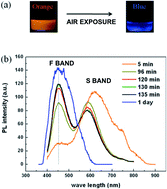
Faraday Discuss., 2020,222, 10-81
https://doi.org/10.1039/D0FD00018C
Multivalent glycan arrays
In this introductory lecture we discuss the state-of-the-art glycan microarray technology, with emphasis on novel approaches to immobilize collections of glycans in a defined, multivalent manner.

Faraday Discuss., 2019,219, 9-32
https://doi.org/10.1039/C9FD00080A
Systems chemical analytics: introduction to the challenges of chemical complexity analysis
We present concepts of complexity, and complex chemistry in systems subjected to biotic and abiotic transformations, and introduce analytical possibilities to disentangle chemical complexity into its elementary parts as a global integrated approach termed systems chemical analytics.

Faraday Discuss., 2019,218, 9-28
https://doi.org/10.1039/C9FD00078J
Concluding remarks for advances in ion spectroscopy Faraday Discussion
Because the Introductory Lecture of this Faraday Discussion emphasized the recent history and exciting developments in the fields of experimental methods and applications of gaseous ion spectroscopy, these Concluding Remarks are, by design, directed somewhat more toward the roles played by theory.
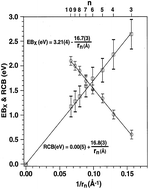
Faraday Discuss., 2019,217, 623-643
https://doi.org/10.1039/C9FD00058E
Introductory lecture: advances in ion spectroscopy: from astrophysics to biology
This introduction provides a historical context for the development of ion spectroscopy over the past half century by following the evolution of experimental methods to the present state-of-the-art.
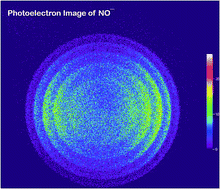
Faraday Discuss., 2019,217, 8-33
https://doi.org/10.1039/C9FD00030E
Spiers Memorial Lecture
A brief introduction into artificial photosynthesis technologies is presented.
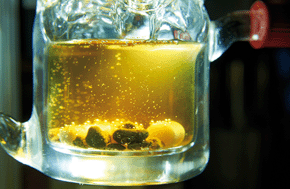
Faraday Discuss., 2019,215, 9-14
https://doi.org/10.1039/C9FD90025J
Spiers Memorial Lecture
In these introductory remarks we discuss the generation of nonequilibrium electrons in metals, their properties, and how they can be utilized in two emerging applications: for extending the capabilities of photodetection (left), and for photocatalysis (right), lowering the barriers of chemical reactions.
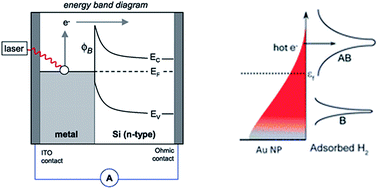
Faraday Discuss., 2019,214, 13-33
https://doi.org/10.1039/C9FD00001A
Spiers Memorial Lecture
This Spiers Memorial Lecture discusses quantum effects that can be calculated and observed in the chemical reactions of small molecules.
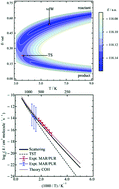
Faraday Discuss., 2018,212, 9-32
https://doi.org/10.1039/C8FD00131F
Nanoscale electrochemical kinetics & dynamics: the challenges and opportunities of single-entity measurements
The stochastic nature of very fast single-entity events challenges current electrochemical methods and modern electronics, as illustrated using recent experiments from the authors’ laboratory.

Faraday Discuss., 2018,210, 9-28
https://doi.org/10.1039/C8FD00134K
Spiers Memorial Lecture
This review gives an overview of the impact of structure on the understanding of photoinduced processes in macromolecules, focusing on systems presented at this Faraday Discussion meeting.

Faraday Discuss., 2018,207, 9-26
https://doi.org/10.1039/C8FD00058A
Spiers Memorial Lecture
Faraday Discuss., 2017,205, 9-30
https://doi.org/10.1039/C7FD00181A
Spiers Memorial Lecture:
Faraday Discuss., 2017,201, 9-45
https://doi.org/10.1039/C7FD00160F
Introductory lecture: atmospheric chemistry in the Anthropocene
Faraday Discuss., 2017,200, 11-58
https://doi.org/10.1039/C7FD00161D
Chemical physics of electroactive materials – the oft-overlooked faces of electrochemistry
Faraday Discuss., 2017,199, 9-28
https://doi.org/10.1039/C7FD00117G
Introductory lecture: sunlight-driven water splitting and carbon dioxide reduction by heterogeneous semiconductor systems as key processes in artificial photosynthesis
Faraday Discuss., 2017,198, 11-35
https://doi.org/10.1039/C6FD00221H
Introductory lecture: recent research progress on aggregation-induced emission
Faraday Discuss., 2017,196, 9-30
https://doi.org/10.1039/C6FD00218H
Carbon Capture and Storage: introductory lecture
Faraday Discuss., 2016,192, 9-25
https://doi.org/10.1039/C6FD00148C
Spiers Memorial Lecture
Faraday Discuss., 2016,189, 9-29
https://doi.org/10.1039/C6FD00065G
Solid oxide electrolysis – a key enabling technology for sustainable energy scenarios
Faraday Discuss., 2015,182, 9-48
https://doi.org/10.1039/C5FD90071A
Spiers Memorial Lecture
Faraday Discuss., 2015,181, 15-18
https://doi.org/10.1039/C5FD90056E
Introductory lecture on corrosion chemistry: a focus on anodic hydrogen evolution on Al and Mg
Faraday Discuss., 2015,180, 11-33
https://doi.org/10.1039/C5FD00066A
Crystal nucleation from solutions – transition states, rate determining steps and complexity
Faraday Discuss., 2015,179, 9-26
https://doi.org/10.1039/C5FD00037H
Introductory lecture: nanoplasmonics
Faraday Discuss., 2015,178, 9-36
https://doi.org/10.1039/C5FD90020D
Introductory Lecture: The physical chemistry of functionalised biomedical nanoparticles
Faraday Discuss., 2014,175, 9-11
https://doi.org/10.1039/C4FD90076F
Introductory lecture: Systems materials engineering approach for solar-to-chemical conversion
Faraday Discuss., 2014,176, 9-16
https://doi.org/10.1039/C4FD00264D
Spiers Memorial Lecture
Faraday Discuss., 2014,174, 9-20
https://doi.org/10.1039/C4FD00191E
Electron transport in all-carbon molecular electronic devices
Faraday Discuss., 2014,172, 9-25
https://doi.org/10.1039/C4FD00172A
Spiers Memorial Lecture
Faraday Discuss., 2014,173, 9-46
https://doi.org/10.1039/C4FD90039A
Introductory Lecture: Mechanochemistry, a versatile synthesis strategy for new materials
Faraday Discuss., 2014,170, 9-34
https://doi.org/10.1039/C4FD00162A
Importance of many-body orientational correlations in the physical description of liquids
Faraday Discuss., 2013,167, 9-76
https://doi.org/10.1039/C3FD00110E
Introductory lecture: Atmospheric organic aerosols: insights from the combination of measurements and chemical transport models
Faraday Discuss., 2013,165, 9-24
https://doi.org/10.1039/C3FD00108C
Introductory Lecture: Interpreting and predicting Hofmeister salt ion and solute effects on biopolymer and model processes using the solute partitioning model
Faraday Discuss., 2013,160, 9-44
https://doi.org/10.1039/C2FD20128C
About this collection
The Spiers Memorial Lecture is given by the introductory lecturer at each Faraday Discussion. Typically an individual who has made an outstanding contribution to the field of the meeting, the introductory lecturer is invited by the scientific organising committee of each Faraday Discussion to set the scene for the presentations and discussion that follow.
The lecture is named after Frederick Spiers, a physical chemist and cofounder of the Faraday Society. Born in London in 1875, Spiers helped found the Faraday Society in 1903 to fuel discussions in chemistry, and he remained Secretary and Editor of the Society until his death in 1926. From 1929 until 2020, the Spiers Memorial Award was presented to an individual who had made an outstanding contribution to the field of a Faraday Discussion. In 2020, as part of a series of changes introduced following an independent review of the Royal Society of Chemistry’s recognition programmes, this award evolved to become the Spiers Memorial Lecture.
We hope you enjoy this collection of work by some of the biggest names in physical chemistry.